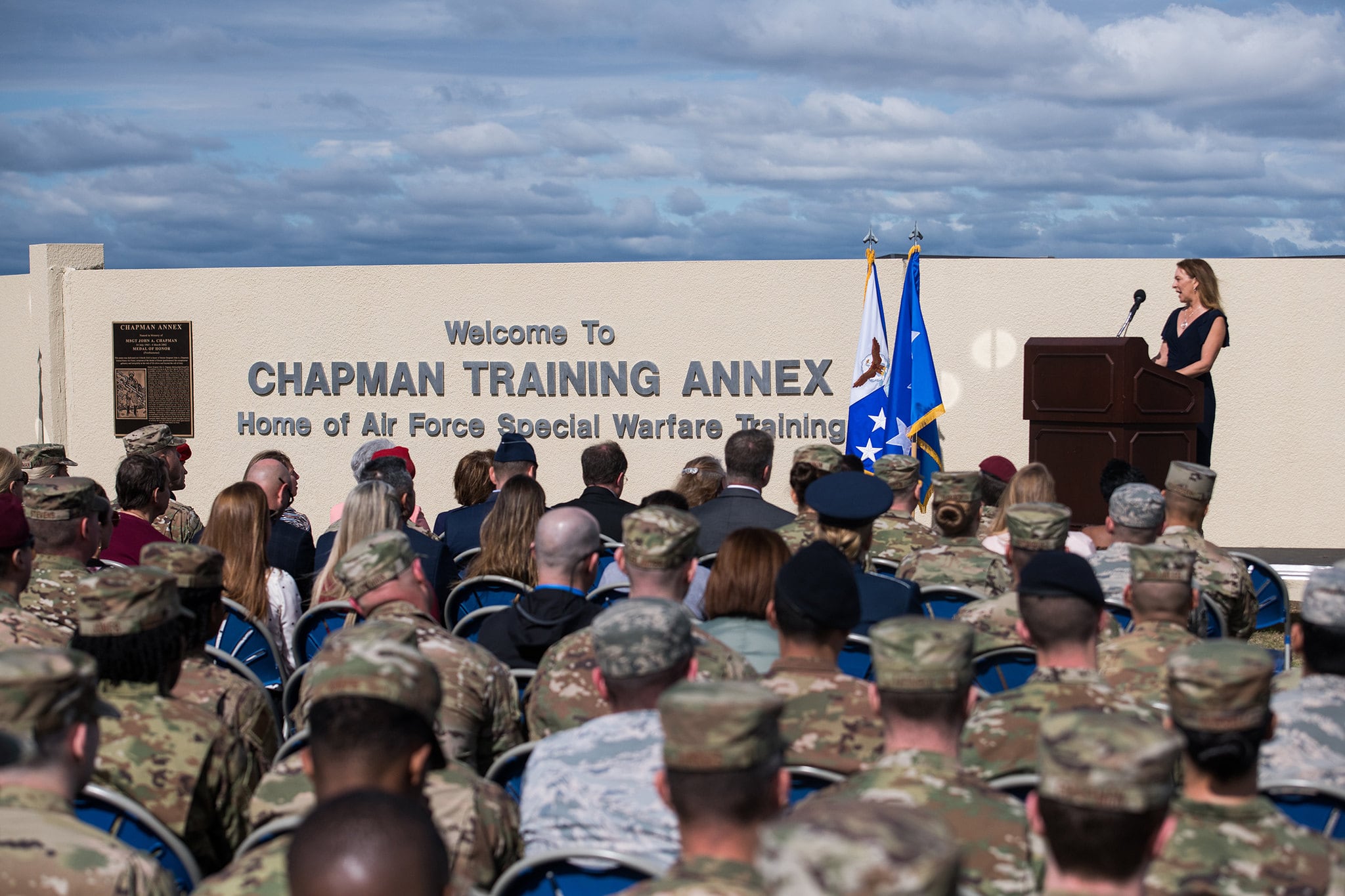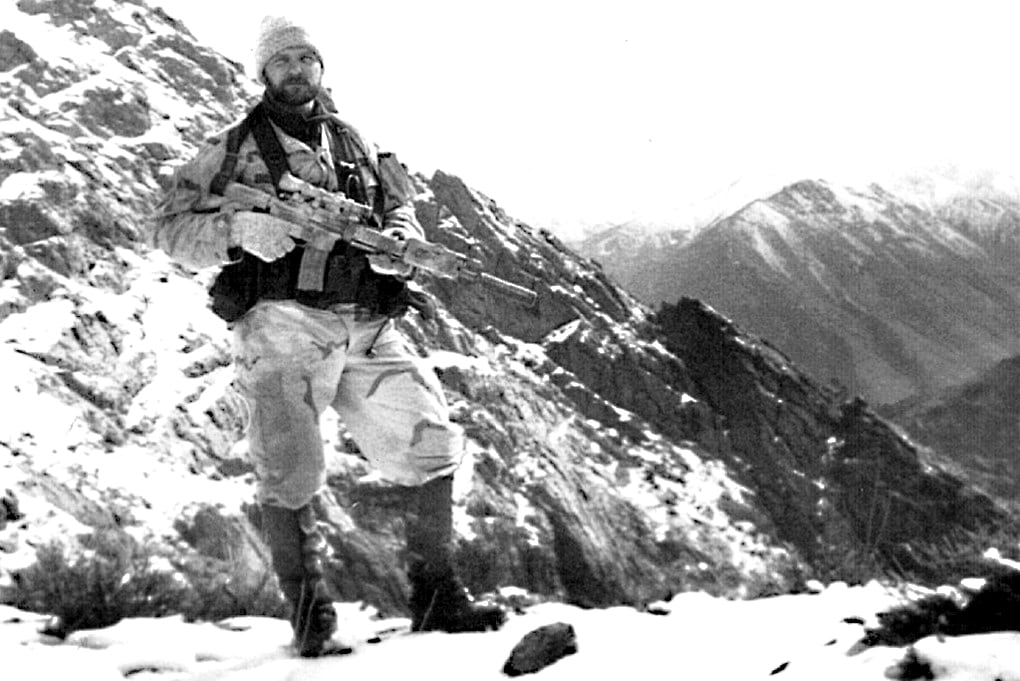The Air Force on Wednesday renamed the building at Joint Base San Antonio-Lackland in Texas used to train special warfare airmen in honor of Master Sgt. John Chapman, the Medal of Honor recipient.
The Lackland Training Annex, unofficially known as the Medina annex, was renamed the Chapman Training Annex 18 years to the day after Chapman was killed battling al Qaida fighters during the mountaintop Battle of Takur Ghar in Afghanistan.
Chapman, a combat controller, originally received a posthumous Air Force Cross for his role in that battle, which is the second-highest valor award an airman can receive.
But after a years-long review of evidence of the battle — including the enhancement of video taken by a Predator drone loitering overhead — the military came to the conclusion that Chapman had lived longer than was originally believed. On his own and wounded, the evidence showed Chapman roused himself from unconsciousness and continued to fight on the 11,000-foot peak — hand-to-hand at some points in the thigh-deep snow — and his actions are believed to have saved the lives of Army Rangers approaching on a Chinook helicopter.
Chapman’s award was upgraded to the Medal of Honor in 2018, making him just the fourth enlisted airman ever to receive the military’s highest honor, and the first airman to receive the award for actions taken since the Vietnam War.

The ceremony was attended by Chapman’s widow, Valerie Nessel, and other members of his family, Vice Chief of Staff Gen. Seve Wilson, Air Education and Training Command head Lt. Gen. Brad Webb, Chief Master Sergeant of the Air Force Kaleth Wright, Texas Sen. Peter Flores and other dignitaries. Attendees performed memorial pushups at the end of the ceremony in honor of Chapman.
“John Chapman was a great warrior, a steadfast friend, a selfless patriot and above all a man of unquestionable character,” Wilson said. “It’s important that we always remember and never forget his sacrifices, so this Chapman annex might stand as an enduring reminder to all about the ideals of selfless service, about an unwavering commitment to duty, and to fellow airmen, and so that we can happily characterize what John Chapman did in his service to our nation.”
RELATED

In a Tuesday interview, Col. Parks Hughes, commander of the Special Warfare Training Wing at Lackland, said that renaming the building is an appropriate and lasting way for the Air Force to memorialize Chapman.
It’s also significant for the special warfare community, Hughes said, since every airman seeking to join those ranks passes through the annex after coming out of basic military training. About 1,000 airmen across four enlisted special warfare career fields are trained at the annex each year, AETC said.
Chapman went through his own training there in 1989 on his way to becoming a combat controller, Hughes said.
“It’s where they start [on the path to becoming a special warfare airman], it’s where they confront their first crucible,” Hughes said.
And the Chapman annex is where every enlisted airman conducts his or her initial combat skills training while in basic training, Hughes said.
“It’s very appropriate that going forward, every enlistee in the Air Force will understand the warrior legacy of John Chapman,” Hughes said.
Hughes said the Air Force began thinking of ways to honor Chapman for posterity shortly after President Trump presented the Medal of Honor to his family in August 2018. Renaming an installation for him soon became a leading idea. When Webb — who advanced the package to upgrade Chapman’s award during his previous role as head of Air Force Special Operations Command — took command of AETC last July, he saw an ideal opportunity to honor Chapman by renaming the annex.
It’s a rare honor for an enlisted airman to have an Air Force installation named for him, Hughes said. Scott Air Force Base in Illinois, for example, is the only base in the service named for an enlisted service member — Army Cpl. Frank Scott, who in 1912 became the first enlisted service member to die in a plane crash in U.S. military history.
Hughes also said the wing is looking at ways to better memorialize all special warfare airmen who were killed in the line of duty, but nothing has been decided yet.
Stephen Losey is the air warfare reporter for Defense News. He previously covered leadership and personnel issues at Air Force Times, and the Pentagon, special operations and air warfare at Military.com. He has traveled to the Middle East to cover U.S. Air Force operations.




